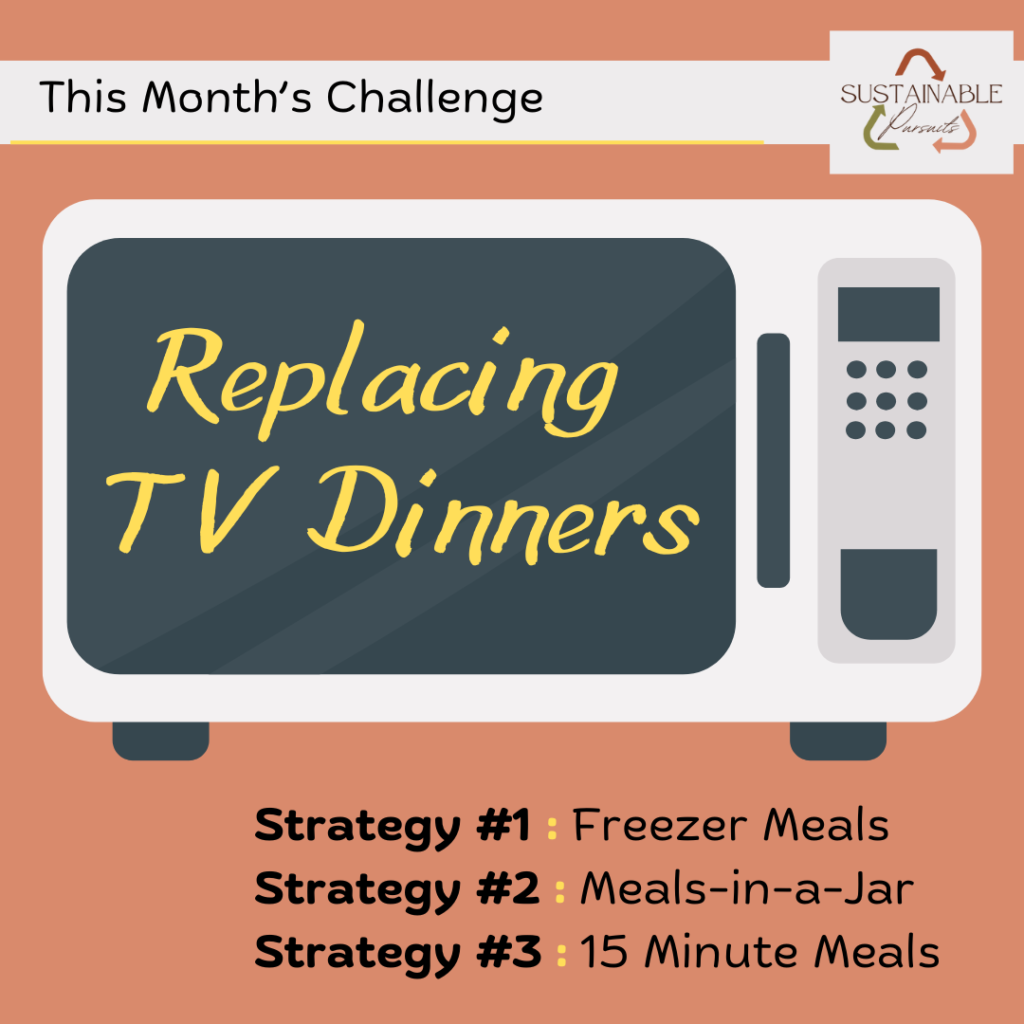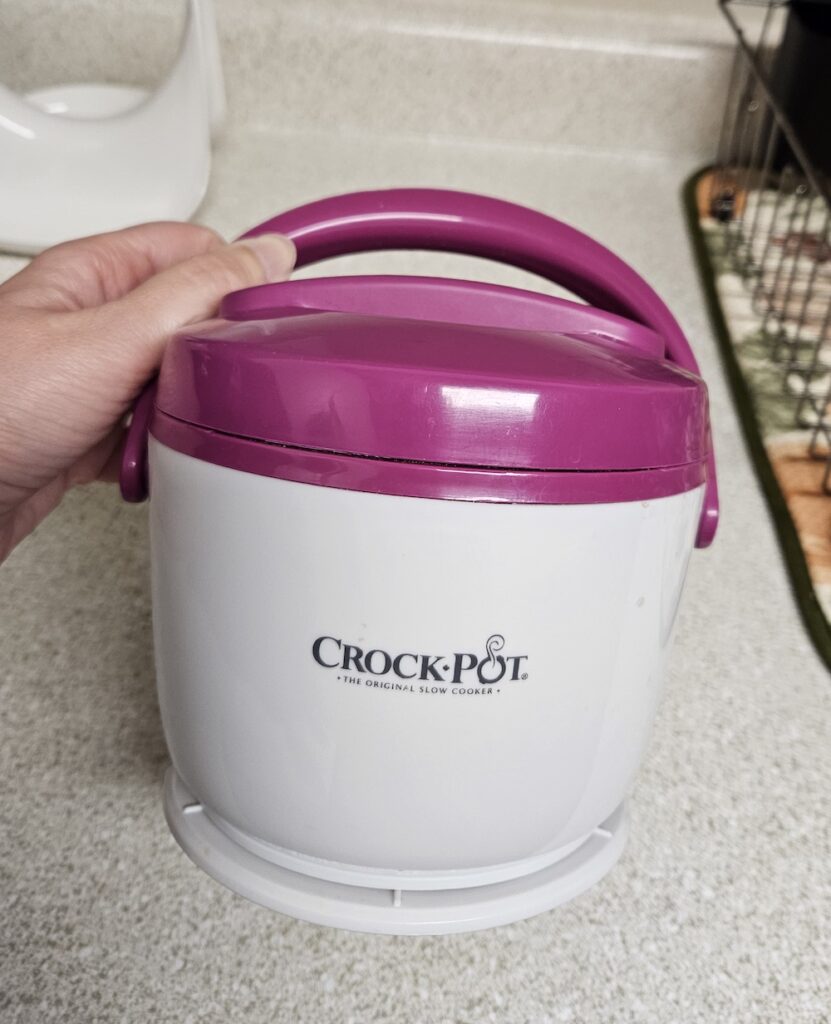
This month, our plastic-free challenge is to replace TV dinners/microwave meals in order to cut down on plastic in our kitchens and food. We’re using 3 strategies to meet this challenge – freezer meals, meals in jars, and 15 minute meals. In reading the articles, you may have noticed I still use the microwave as a quick heating option. That’s because all I’m trying to do for this challenge is eliminate the single-use plastics from TV dinners and microwave meal pouches. Now some of you might be saying, “but Susie, I have feelings about using the microwave…”, or “I don’t have a microwave.”
So, while I’m personally not against using the microwave, I wanted to make sure I cover some of the alternatives. In fact, I did go a few years without a microwave due to limited counter space. At the time, I decided to prioritize my toaster oven over a microwave. So, I ended up selling the microwave and did just fine without it for about 5 years. This past year is when I started using a microwave again. So, I’ll go over some of the methods I was using to cook, or reheat, meals without a microwave in case that would be helpful information for you.
Oven instead of the microwave
More specifically, the broiler function on the oven. I found the oven itself took too long for most reheating needs. The broiler on the other hand I used all the time. The broiler is particularly good for melting cheese, either for nachos, quesadillas, or tuna/turkey melt sandwiches. In addition to the broiler, you’ll find an oven-safe skillet to be very handy for this option. Frittatas was another good use for this.
Toaster Oven instead of the microwave
A toaster oven is basically a small electric oven. While it doesn’t reheat food as quickly as a microwave, it certainly heats/cooks small dishes of food much faster than a regular oven. This is due to being smaller in size. As far as I know, most toaster oven models have a broiler function as well. For a whole year I did all of my baking, broiling, and cooking with my toaster oven instead of the regular oven.
Stove Top instead of the microwave
Most foods can be reheated quickly in a small sauce pan or skillet. If you are reheating pasta or rice, it is best to add a bit of liquid to keep it from sticking to the pan, and use a lower heat. Yes, this will make the rice/pasta softer and possibly mushy. This is why I like homemade freezer meals like curry or teriyaki because you can reheat the rice and sauce together and they usually come out well. Note – when making homemade freezer meals (that will be reheated later), it’s recommended to cook the rice and pasta al dente so it won’t be too soft when it gets reheated.
My Favorite – the Crockpot Lunch Warmer
This is probably the slowest reheating method of the ones listed here, but it is my favorite for reheating leftovers, or for cooking individual ‘meals in a jar’. Let me tell you why! From my experience, this is probably the best reheating method for maintaining the textures of rice and pasta. The mini crockpot only has one setting, warm. I find you need at least an hour to reheat your food but you can let it sit for several hours. This is great if your meal times vary and you don’t have a microwave.

There are several types of electric lunch warmers. I’ve been using the Crockpot Lunch Crock Food Warmer for several years now and I’m still very happy with it! Granted, mine is the older version of the one in the link. I haven’t tried any of the other brands or styles so I can’t really make any recommendations other than the crockpot one.
How to use the crockpot lunch warmer for ‘meals in a jar’
The ‘meals in a jar’ recipes I prefer to are the ‘just add water’ type made from freeze-dried* or dehydrated foods. Here’s a few tips to make your ‘meal in a jar’ meal in the Lunch Warmer. When adding water, make sure the water is boiling. This gives the cooking process a head start. After adding food and liquid to the insert, plug in the crockpot. Put the cover on and let the crockpot sit for at least an hour. If the crockpot is going to sit for a few hours, I sometimes add an extra 2 tbsp of water to the recipe.
I find instant rice does really well in the crockpot lunch warmer. The thing the lunch crockpot doesn’t cook well are the gluten-free noodle soup mixes. For some reason the noodle texture comes out odd, I think it has to do with the temperature. Now reheating gluten-free pasta leftovers in the lunch crockpot are another story, these come out great!
Just to clarify, using the lunch crockpot to cook GF pasta not so great, but reheating GF pasta totally great!
If you opt for the microwave
For those who are using the microwave, here’s a few safety reminders:
- Don’t heat plastic for cooking. This can lead to chemicals in the plastic leaching into your food.
- Platinum grade silicone is one of the materials that can safely go straight from the freezer to the microwave or oven.
- Make sure your glass containers are designated as microwave-safe before using them in the microwave. Mason jars are not intended to be used in the microwave.
Hope this was helpful in figuring out different ways to quickly and/or easily heat food without a microwave. If I left any methods out, please feel free to mention them in the comments below.
* I will only recommend products that I personally use and love and hope can be of benefit to others in their sustainable journeys. (*) indicates an affiliate link where Sustainable Pursuits llc may receive a small compensation for product recommendations.

